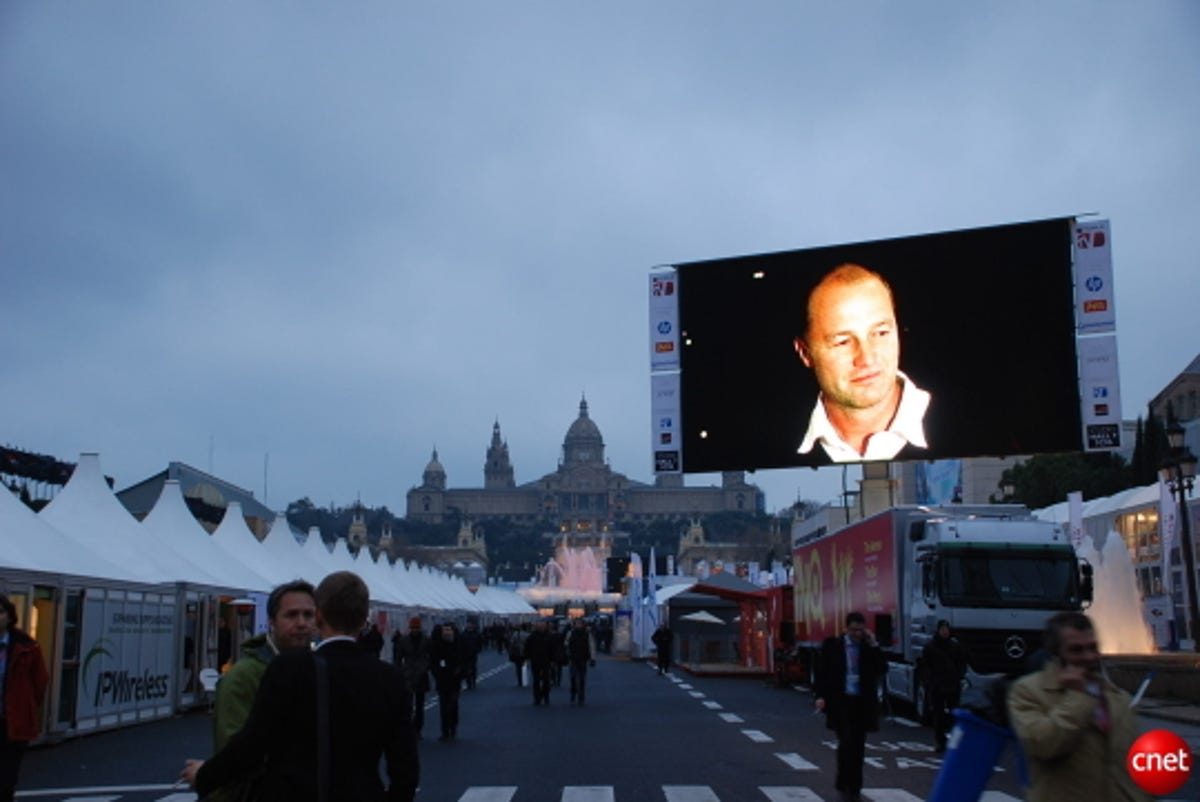
Kent German/CNET
Despite returning to a dreary, cold day here in New York, it’s nice be back home here in the States. It’s hard to believe that only a week ago Mobile World Congress 2010 was just kicking off in Barcelona, Spain–all of us eager to see what news and products would be unveiled at the world’s premier cell phone show.
Despite some logistical nightmares, MWC 2010 certainly didn’t disappoint. Interestingly, it wasn’t so much the new handsets that made headlines this year (in fact, several cell phone manufacturers, including Nokia and LG, didn’t even have booths), but rather, it was the software that stole the show.
If you think about it, this makes sense. We’re getting to a point where it’s getting harder for companies to differentiate themselves by hardware. Most smartphones these days all have a full range of wireless options, touch screens, 3.5mm headphone jacks, and next-generation processors. So how do you get a leg up on the competition? By offering better software and mobile content options.
At MWC 2010, we saw two mobile operating systems, in particular, that have both struggled to keep up with their adversaries finally make their move to be relevant in the smartphone world once again: Windows Mobile and Symbian. Without a doubt, Microsoft had the more spectacular showing of the two with its unveiling Windows Phone 7 Series.
Not just a minor update of the OS, Microsoft pretty much started from the ground up and delivered something completely new and exciting. From the slick and simplified user interface to the new Xbox and Zune integration and its smart data management system, Windows Phone 7 Series makes us hopeful for the upcoming smartphones running the OS, and it seems like most of you feel the same way too, despite some lingering questions. It’s just unfortunate that we have to wait till the holiday season to do so. It’s also slightly unfortunate for the Windows Mobile 6.5.3 smartphones that were announced at the show, such as the HTC HD Mini and Toshiba G02. Will anybody want those now?
The Symbian Foundation was also at MWC screaming, “don’t count us out!” (though not as loudly as Microsoft). There, the foundation introduced Symbian 3. A stepping-stone to Symbian 4, the major revamp of the mobile OS. Symbian 3 brings much-needed improvements in three key areas: user interface, multimedia, and performance. Such enhancements include HDMI support, single-tap user interface, and the addition of multiple home screens. However, not being able to see it run on an actual device made it a bit difficult for us to form an opinion. We suppose we’ll find out though when the Symbian 3 handsets start making their way to market later this year.
Speaking of handsets, just because we said they weren’t headliners of the show doesn’t mean we didn’t see any new, shiny gadgets. Quite the contrary. As we expected, Android smartphones had the biggest presence at the show. Motorola introduced the Cliq XT with Motoblur software for T-Mobile. Sony Ericsson showed plenty of Android love, adding the Xperia X10 Mini and Xperia X10 Mini Pro to its portfolio. We also finally got the Xperia X10 on video. Of course, HTC, one of Android’s biggest supporters, wasn’t about to let everyone else have the fun and announced the drool-worthy HTC Legend and HTC Desire. Other notable Android phones include the LG GT540 and the Garmin-Asus Nuvifone A50, which doesn’t look half bad.
Of course, one of the best parts (and also one of the hardest parts) of MWC is checking out cell phones from around the world. Inevitably, these devices are much cooler than anything we’ll ever see in the States, and they often leave us seething with jealousy, but what can we say, we’re a glutton for punishment. Just have a look at the offerings from Japan mobile operator NTT DoCoMo, or my personal favorite, the Puma Phone.
Obviously, there was plenty more news to come out of MWC 2010, including the proliferation of app stores and new services. If you missed any of it, just check out our Mobile World Congress 2010 page and there you’ll find all the latest news, photos, and videos. We’d also love to get your general impressions of the show. Was there anything in particular that impressed you? Any disappointments? Let us know.
Till next year, Barcelona. Next stop: Las Vegas for CTIA Spring 2010.



